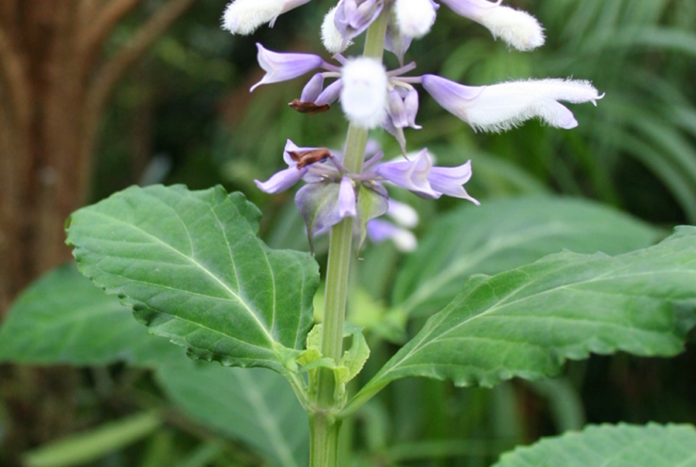Salvia (salvia divinorum) is herb that is native to the Oaxaca region of Mexico. Salvia is a member of the sage family, but it is distinct from common sage (salvia officinalis), used in cooking, and white sage (salvia apiana), used for incense or smudging.
What is the salvia experience like?
Although it is one of the lesser-known psychedelic substances, salvia has strong psychoactive properties. The salvia experience is characterized by intense visuals that are somewhat unique from other psychedelics. At lower doses, salvia brings clarity of mind, tingling sensations, and an enhanced awareness of one’s body. At higher doses, effects include dizziness, intense colors and visuals, ego loss, entity encounters and a sense of other dimensions.
Salvia can be consumed in several ways, including tincture form, smoking, vaping, or chewing. Traditionally, salvia was chewed, through “quidding,” where a ball of plant material is wadded up, kept under the tongue, and chewed periodically for at least 30 minutes before being discarded. The onset of the salvia experience comes extremely quickly with smoking or vaping, usually within 2-3 minutes, and lasts around 30 minutes. With the quidding method, onset is slower (15-20 minutes) and less intense.
A brief history of salvia divinorum
Salvia divinorum has been used in traditional Mazatec ceremonies for the treatment of physical pain, addiction, and depression for centuries. More recently, seekers have used salvia for personal growth, spiritual practice, and deeper insight. Salvia is one of the least regulated psychedelics and is currently legal in many parts of the world.
Salvia Safety
Physical safety
When used respectfully, salvia is quite safe. The active ingredient in salvia, Salvinorin A, has low toxicity, even when administered at extremely high doses (Mowry, Mosher & Briner, 2011). One month after various dosages of Salvinorin A were administered to human subjects, no adverse affects were found (McLean, Johnson, Reissig et al, 2012). There is no current evidence that salvia is addictive (Listos, Merska & Fidecka, 2011).
However, current research also indicates that toxicity increases significantly with chronic use of salvia divinorum, suggesting that regular, repeated use carries risk (Martinho, Silva & Gallardo, 2016).
Salvia should not be mixed with alcohol or other drugs.The toxicity of salvia increases dramatically when it is combined with other substances, including other psychedelics (Vohra, Seefeld, Cantrell et al, 2012). The interactions of salvia with common medications are not well known at this time, and therefore great caution should be used when mixing salvia with prescription medication or over-the-counter medication.
Psychological safety
As with all psychedelics, set, setting and sitter are crucially important for safety. The salvia experience can be intensely disorienting for many users and can cause complete blackouts in some cases. It is strongly recommended to have a trustworthy sitter and to ensure that the environment is safe, with no hazardous objects present. Check out Psychedelic Experience’s general guide to psychedelic safety.
Salvia Science
Pharmacology
The psychoactive component in salvia (Salvia divinorum) is a powerful natural psychedelic compound called Salvinorin A. Whereas many psychedelic molecules contain nitrogen atoms, Salvinorin A is unique in that it contains only carbon, hydrogen, and oxygen.
Unlike more common psychedelics, such as psilocybin, DMT (including ayahuasca) and LSD, Salvinorin A does not interact with the brain’s serotonin receptors. Instead, it creates highly selective, strong bonds to kappa-opioid receptors (KOR). In this sense, salvia shares pharmacological aspects with iboga, which also acts upon KORs.
Therapeutic Use
A recent study showed that Salvinorin A creates measurable disruptions to the brain’s default mode network (DMN) during the peak of the experience. The finding suggests that, like classic psychedelics, salvia has significant potential to treat certain disorders, such as treatment-resistant depression and anxiety.


